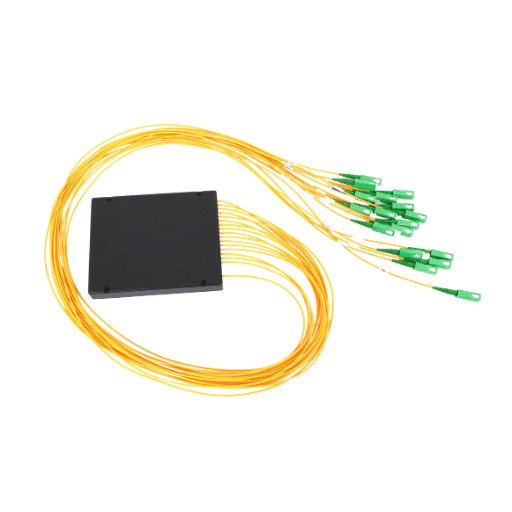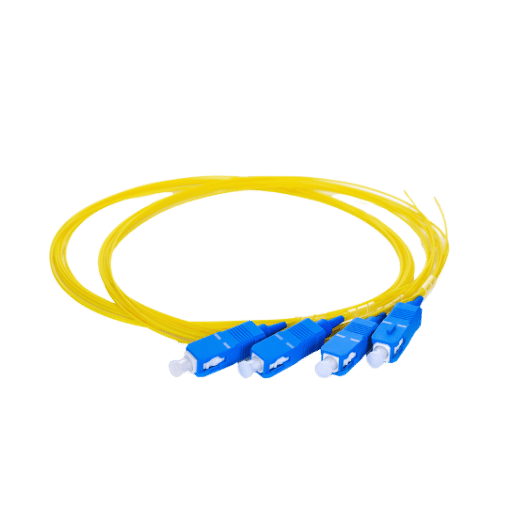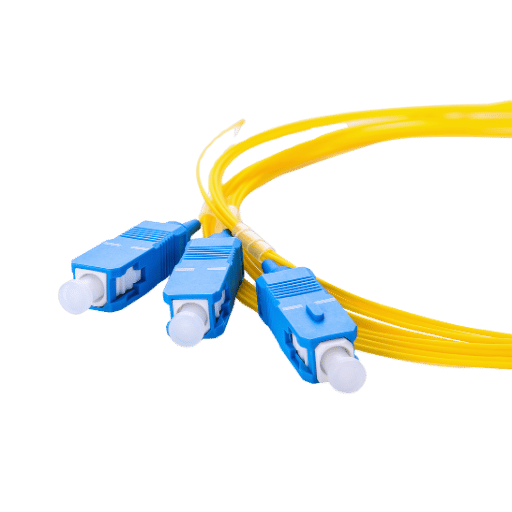As the twentieth century progressed and new networking foundations became more valuable for communication systems, so did fiber optic technology. Couplers and adapters used within the isolating structure allow the connection of different types of optical fibers while ensuring that the loss of the signal is limited. The purpose of this document is to extend the knowledge of people in the readership about fiber optic couplers and fiber optic adapters as well as their applications in networking. By covering important mechanical and thermal features, we want to provide a beginner and an experienced user out with information that will allow them to choose and use such components in the development of their networking environment/custom.

A fiber coupler explains what a fiber coupler can do. A fiber coupler is a passive optical device that takes multiple optical fibers and mixes or divides the optical signal in them while measuring distances with each constituent. Instead of running the signal through each fiber separately, it enables the use of multiple fibers and ganging them into one for transmission, which reduces the amount of attenuation and retains optical quality. Fiber couplers are very important components for use in telecommunication and networking systems and in optical sensing, where tap couplers are used to achieve the required performance in passive optical network design.
The telecommunications and networking sectors have made the incorporation of couplers in diverse applications. One such application is in telecommunication networks, where they make it possible to deliver signals to various destinations, thus ensuring effective communication. In the case of a fiber-to-home (FTTH) system, these categories of optical splitters help the service provider efficiently extend internet and television facilities to various users using a single fiber. Moreover, in data centers, fiber couplers act as routing elements between servers and storage devices which improve the efficiency of the network. In optical sensing, these devices are used for combining signals from environmental or structural health monitoring sensors improving the sensing measurement possibilities. Finally, Research institutions do heavily rely on fused fiber to facilitate various optical experiments. Researchers do make use of fiber couplers to carry out experiments involving accurate manipulation of light thus contributing towards the development of optics and photonics.

Fiber optic couplers work based on the laws of light and waveguide design. More specifically, they achieve the action of light coupling, i.e., light carried by one fiber is coupled into another. There are several ways in which a coupling can be achieved, for example the techniques may range from evanescent field coupling to fusion splicing. In the first case, for example, a reasonable evanescent field exists so that even light propagating if coupled does ‘see’ the other fiber, and as such, light can get into the other fiber. Fusion splicing, on the other hand, is the act of bringing together two ends of a fiber and permanently joining them in a particular configuration so that a minimum of the signal is lost. The efficiency of a fiber coupler is dependent on factors such as precision of alignment, the range of wavelengths that can pass through the device, and the nature of the fibers.
First things first, it is very critical to understand the fundamental differences before comparing the single mode and multimode fiber couplers. The use of single-mode fiber couplers makes it easy to transmit the light usable in only one way, as a result of which the broader distance could be made without loss due to modal dispersion. This is done by opting for a design with a single core having a diameter size equal to 9 micrometers. However, multimode fiber couplers with a core diameter size which ranges from 50 SR to 62.5 micrometers allow light to travel in which ever direction influencing the use of hybrid types of fibers, These designs are effective in the utilization of cheaper LED light sources but shorter distances have to be used due to large modal dispersion. Cost and application requirements regarding distance, bandwidth, and the budget will govern the final choice of the single mode or multimode fiber couplers.
Configurations such as 1×2 and 1×4 refer to the configurations of optical couplers that are used to distribute input signals among several output fibers. A single input signal is supplied to a 1×2 coupler which in turn divides it into 2 output signals. Therefore, two different signal paths can now be accepted at the same time into two devices by means of the coupler effects on transmission. Such arrangements are ideal for applications that require that a signal be fed to two devices while retaining adequate levels.
Conversely, a 1×4 coupler takes this concept further by splitting the single input signal into four output signals instead. This further extends the distribution as required for broader reach applications and is especially effective in networked systems or scenarios where the same signal needs to be received at different points. With both configurations, however, critical parameters like insertion loss, uniformity, and wavelength dependency, which are necessary for the efficient functioning the product, should also be addressed.

Single-mode fiber couplers are designed to be used with single-mode fibers that have a core diameter of about 9 microns. This constraint enables the propagation of a single mode of light, and hence, such couplers have very little modal dispersion and also allow for longer distances due to the rather high bandwidth. These types of couplers can be used in applications where there’s a need to transmit data over long distances at high speed which is common to the telecommunications and data center industries.
On the other hand, multifiber couplers function with a specific type of multimode optical fibers whose core diameters are generally more than 50 micrometers and between 62.5 micrometers. Such configurations can convert a single light into several light transmitting modes, making them suitable for short distances where LED light sources are cost-effective. This leads, however, to larger modal dispersion, which limits the distance a signal can travel. In conclusion, the choice of either single or multimode fiber couplers should be made based on parameters such as distance to be covered, bandwidth to be achieved, and cost of the installation.
Active fiber couplers have the ability to include electronic provisions and, as such, provide additional gain for signals, thus extending the transmission distance and improving the quality of transmission in areas where signals are poor. These couplers are well suited for applications where long-distance communication and quality of the signal are essential. However, the operation of passive fiber couplers is without power or amplification; they only depend on the light transmission mechanisms for the splitting or combining of the signals. They are cheap and applicable in places where signals can be accommodated and where there is little need for power consumption. In the end, whether to use active couplers or passive ones will be determined by the needs of the specific application, which may include distance and power capabilities as well as budget constraints.
One way simplex couplers are deployed in such a way that in the transmission of signals, there is only one direction of flow. Such a configuration is very useful in areas where there is only one direction of health, i.e. unidirectional, such as in monitoring or other communication systems. On the other hand, there are duplex couplers that allow for two directions of transfer of data, that is, transmission of data in one direction and also in the opposite way at the same time. This applies very well in situations where effective feedback is needed, especially in data centers and even telecommunications networks where data movement needs to be active. The decision on whether to use simplex or duplex fiber couplers will be determined by the application requirements for data transfer and the design of the network.

All these types of connectors aid the transfer of signals by bonding different fiber rent module optic tools that transmit signals without hitches.

Fiber optic couplers optimize the efficiency of the system by giving the chance to combine multiple fiber strands into one, thus reducing the amount of losses and interference between channels. They have a minor insertion loss; thus, most of the optical signal is received and not consumed on the way, thus enhancing performance in the long haul. In addition to that, couplers enhance the ease of increasing and changing the topology of the network, thus accommodating the future through a cosmetic change rather than an intrusive one. This is especially useful in places where the traffic density is constantly changing as it allows an elastic distribution of available bandwidth resources, which enhances the aggregate network performance as well.
Thanks to fiber optic couplers, the total expenditure on the network infrastructure is reduced massively since the need for several cables and connectors is confined. The unification of connections reduces the material costs but at the same time the expenses on installation and maintenance are also reduced. In addition to that, the strength and the durability of fiber optics require infrequent replacement and repair which allows organizations to address present day challenges whilst preparing for the future growth.
Thanks to fiber optic couplers, one doesn’t have to worry about the construction aspects that surround the optical networking area. Fiber optic couplers allow one to rearrange and change the topologies of the networks with little to no disturbance. This facilitates modifications quite easily since they are made in modular form and new plants can be included in the network system or the existing ones reorganized. Couplers also permit arbitrary network layouts like point-to-point, ring, star, and others, which add to the system’s general adaptive nature. Flexibility in this regard is very important, especially in situations where the pace set by technology advances and interactions require the company to adapt swiftly in order to achieve operational efficiency and effectiveness.
A: A fiber optic adapter or a fiber coupler is a little device whose purpose is to join two fibers Immersed in the transferred media. It holds the timely coherence of the Fiber Compositions, urging minimal loss of integrity. Fiber optic adapters are universal because, to begin with, they are either singlemode or multimode, which demonstrates their relevance for network extensions or connections to different types of fibre optic connectors.
A: Normally used types of connectors for fiber optic include LC, SC, ST, FC, and MTP/MPO. SC and LC fiber connectors are some of the more common connectors used these days, with the latter having a more compact dimension. These types of connectors are compatible with any of the singlemode and multimode fiber optics.
A: Designing Singlemode fiber optic cables requires a smaller core size (less than 10 microns; usually, the core is about 9 microns); hence, the light signal is guided in only one direction or one path. Hence, they are used in long-range communication. On the other hand, normal multimode fiber optic cables have a larger core size, usually 50 or 62.5 microns, which facilitates more than one light path, and they are not good for long distances due to the high modal dispersion encountered.
A: Fiber optic couplers are devices that either break down optical signals or combine them. They are used in several ways, whereby one can take a signal out and put it into several outputs (splitters) or take several input fibers and put them into one fiber (combiners). Telecom operators, data centers, and all other fiber optic communication systems employ them. For example, one type of coupler is a tree coupler, which divides signals into subordinated branches.
A: Singlemode fiber optic adapters are those that are compatible with singlemode fiber cables which are few in diameter and hence can cover greater distances with lower loss. Whereas, Multimode fiber optic adapters are those that accommodate multimode fibers, thicker in diameter and hence are limited to shorter distances because of excessive modal dispersion.
A: An LC duplex fiber optic adapter is used to join two LC duplex connectors together. Its two ports are designed to cater for the duplex polarity of the LC connectors whereby both ports have the capacity to carry two fibres. Such an adapter is common in high density networks common is data centers.
A: In the case of a fiber optic patch cable, the features one should take into account as made of a singlemode or multimode and what type of connectors are used (LC, SC, etc), the length of the cable, the purpose parameter such as bandwidth, distance coverage and other. It is essential for specifications to match the network where they are expected to perform properly.
A: After evaluation of these connectors in Ethernet networks, it could be noted that the strength, ease of use, and reliability of these connectors made SC connectors dominant in most industries. These SC connectors can be easily inserted and pulled out because they are of the push-pull type. SC connectors are available in singlemode and multimode SC connectors that can be used in patch panels, switches, and network interfaces.
A: A fiber optic splitter takes a single optical signal and splits it into several signals so that light can be fed into numerous output fibers. This is achieved by employing an optical coupler. Such Splitters are important devices in passive optical networks (PONs) that afford a single input fiber that can reach multiple endpoints.
Fiber optic couplers are used in telecom and CATV systems among other applications; hybrid fiber applications are quickly gaining prominence. These Networks Development Officers work in great areas of both the distribution and combination couplers and hence the development of the system could be made easier. The couplers can split signals for onward distribution or combine signals originating from different sources to yield one signal output.